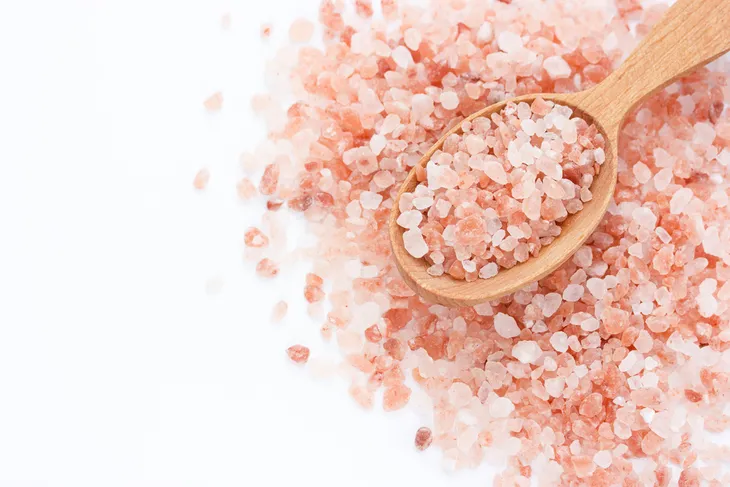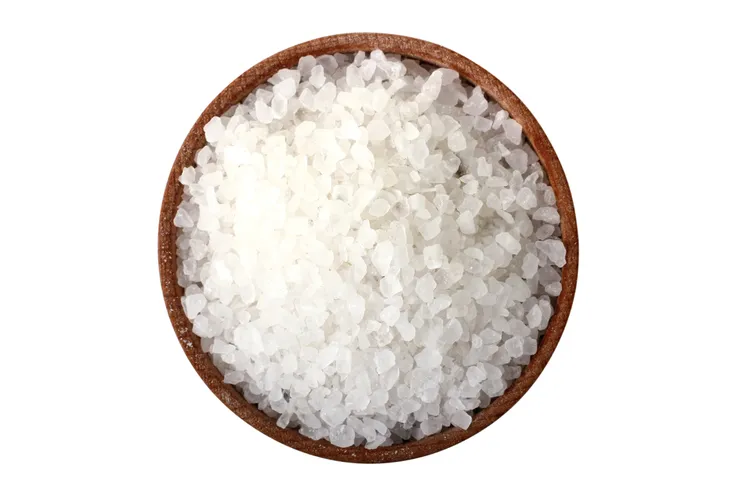Salt, it’s all around us. It’s in our diets and it’s an essential component for animal and human life. But how often do you stop and think about what salt you’re using for what purpose? What are the health impacts of our salt selections? If you’re like most people, this isn’t something you think about very often, if at all, because salt is salt, is salt, right? Well, not exactly.
Years ago there wouldn’t be much decision required in the supermarket when it comes to choosing a salt. Table salt, otherwise known as iodized salt was pretty much the only option you’d find. These days the options are a lot more vast and varied, from sea salts harvested from around the world to salts from active volcanoes. But what’s the difference, and what’s worth paying more for in terms of a salt that benefits your health? Let’s take a closer look and you’ll be able to decide for yourself…
Table Salt
Table salt, also known as iodized salt is the plain old salt you’ll find in countless salt shakers in homes and restaurants throughout North America. It is a versatile salt that can be used in any sweet or savory application. Table salt is highly refined and most of the trace minerals are removed. Then, it’s fortified with the mineral iodine that was originally a public health effort to fight illnesses related to iodine-deficiency as it helps fight a few health related problems like hypothyroidism.
Because table salt is finely ground, it is susceptible to clumping, thus anti-caking agents are added to help avoid this problem. If you choose to avoid table salt in your diet, it’s important to make sure you eat other iodine-rich foods like dairy, eggs, fish, and seaweed. Seaweed tablets are also available as an iodine supplement but it’s recommended you speak to your doctor before starting any supplement routine.
Pink Himalayan Salt
Himalayan salt has been all the rage in recent years and though it may be sold under many different brands and banners, all Himalayan pink salt comes from one salt mine. The Khewra Salt Mine in Pakistan is the second largest salt mine in the whole world. The salt harvested here is famous for its unique pink hue, brought about by trace amounts of iron oxide (aka rust). It also contains other trace minerals including iron, calcium, magnesium, and potassium.
Himalayan salt is also known for having slightly lower amounts of sodium when compared with regular table salt. An important benefit for those who are concerned with sodium causing high blood pressure. There are many claims that pink Himalayan salt offers amazing health benefits due to the fact that it is relatively unrefined, and because of its extra minerals, however there is no scientific evidence to back up these claims at this time.
Kosher Salt
Originally used for religious purposes, kosher salt is unique for its flaky crystalline structure. Jewish law required that the blood of an animal be removed before it’s eaten and the flakey, course structure of kosher salt was particularly good at removing the blood.
In terms of chemical composition, kosher salt does not vary greatly from regular table salt, except that it’s less likely to contain anti-caking agents and added iodine. Its main benefit is its culinary use as many chefs find the large flakey crystals are easier to pick up with fingers and sprinkle more evenly on the food. The flavor of kosher salt is generally the same as regular salt, but since its crystals are much larger, it gives a different texture and burst of salty flavor.
Celtic Salt
Celtic Salt, also known as Grey Salt is a type of sea salt that first became popular in France. Celtic salt is hand-harvested from the sea on the northwest coast of France using traditional methods and tools including wooden rakes. Its grey color comes from the fact that there is still a small amount of seawater present in the salt, which also makes it more moist compared to most other types of salt we see.
Like Himalayan salt, Celtic salt is said to contain more naturally occurring trace minerals as it is completely unrefined. Nothing is added or removed during the harvesting and drying processes. Celtic salt also has the lowest amount of sodium and the highest amounts of calcium and magnesium when compared to table and Himalayan salts. The health benefits of Celtic salt are also yet to be substantiated by science and it’s important to consider that sea salt can contain impurities like lead due to the pollution of our oceans.
Fleur de Sel
Fleur de Sel is a type of French sea salt, widely considered to be the ‘Cadillac’ of salts. It’s hand-harvested from coast ponds where conditions have to be just right for the salt to “bloom” on the surface of the water. It is delicately flavored with an earthiness and crystalline structure that melts slowly on the tongue. Fleur de Sel is unrefined and contains trace minerals, however because of its high price tag, it is considered a special occasion salt.
It’s best used as a finishing salt sprinkled on foods just prior to eating, and you wouldn’t want to use it in cooking or baking where its delicate flavor and crystalline structure would be lost. As mentioned prior, even though sea salts are naturally unrefined, the pollution from our oceans can cause undesired impurities in some salts harvested from the sea.
Red Hawaiian Salt
Red Hawaiian Salt, more commonly called Alaea Salt, is an unrefined sea salt from Hawaii. The sea salt is mixed with red volcanic alaea clay that comes from the island of Kauai and gives the salt its distinct red color. The salt plays an important role in traditional Hawaiian culture where it was used in blessing ceremonies as well as in traditional dishes such as kalua pork and poke.
Hawaiians believe the salt to have many health benefits, including having many naturally occurring trace minerals and electrolytes, eliminating toxins when used in cosmetics, being lower in sodium than table salt and being rich in iron oxide. Like other salts, little health benefits have been proven scientifically, though the salt can still be enjoyed for its smooth taste, unrefined nature and distinct brick red color.
Black Lava Salt
Red Alaea salt isn’t the only salt that the islands of Hawaii are famous for. There’s a salt of a different, but equally unique color that comes from the black lava and its activated charcoal. Black Lava Salt is a type of sea salt that has been blended with volcanic charcoal for its unique and dramatically dark color.
Hawaii is not the only region in the world to produce this coarse dark salt. Cyprus is also a primary production region of black lava salt as well. It is said that the active charcoal in black lava salt has detoxifying properties and is a natural aid for digestion and stomach issues including excess gas. Black lava salt should not be confused with another type of black salt, Indian Black Salt, which is popular in India, Pakistan and other parts of Asia and has a very distinct sulphuric aroma and flavor.
Flaked Sea Salt
Flaked Sea Salt is another type of unrefined sea salt harvested from the ocean. The most popular type is known as Maldon salt and is hand-harvested in the town of Maldon in Essex, England. This type of salt is among the most delicate in structure as the crystals have a unique pyramid structure. The flakey structure makes Maldon salt the fastest dissolving of any salt grain.
Because of its unique flakey crystals, flaked sea salt is used as a finishing salt on foods just prior to eating. The large crystals can be left whole or crushed between your fingers and sprinkled on foods. This salt is said to have a delicate briny flavour which comes from its ocean origins. Comparatively, Maldon salt offers no substantial health benefits over any other type of naturally harvested sea salt.











